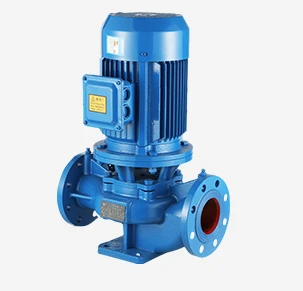Punjabi
- Afrikaans
- Albanian
- Amharic
- Arabic
- Armenian
- Azerbaijani
- Basque
- Belarusian
- Bengali
- Bosnian
- Bulgarian
- Catalan
- Cebuano
- Corsican
- Croatian
- Czech
- Danish
- Dutch
- English
- Esperanto
- Estonian
- Finnish
- French
- Frisian
- Galician
- Georgian
- German
- Greek
- Gujarati
- Haitian Creole
- hausa
- hawaiian
- Hebrew
- Hindi
- Miao
- Hungarian
- Icelandic
- igbo
- Indonesian
- irish
- Italian
- Japanese
- Javanese
- Kannada
- kazakh
- Khmer
- Rwandese
- Korean
- Kurdish
- Kyrgyz
- Lao
- Latin
- Latvian
- Lithuanian
- Luxembourgish
- Macedonian
- Malgashi
- Malay
- Malayalam
- Maltese
- Maori
- Marathi
- Mongolian
- Myanmar
- Nepali
- Norwegian
- Norwegian
- Occitan
- Pashto
- Persian
- Polish
- Portuguese
- Punjabi
- Romanian
- Russian
- Samoan
- Scottish Gaelic
- Serbian
- Sesotho
- Shona
- Sindhi
- Sinhala
- Slovak
- Slovenian
- Somali
- Spanish
- Sundanese
- Swahili
- Swedish
- Tagalog
- Tajik
- Tamil
- Tatar
- Telugu
- Thai
- Turkish
- Turkmen
- Ukrainian
- Urdu
- Uighur
- Uzbek
- Vietnamese
- Welsh
- Bantu
- Yiddish
- Yoruba
- Zulu
Telephone: +86 13120555503
Email: frank@cypump.com
ਦਸੰ. . 19, 2024 22:25 Back to list
Understanding the Differences Between Sump Pumps and Ejector Pumps for Your Home
Understanding Sump Pumps and Ejector Pumps A Comprehensive Guide
When it comes to managing excess water in basements, crawlspaces, or sewage, sump pumps and ejector pumps are essential components in many homes and commercial buildings. Though often confused with one another, these two types of pumps serve distinct purposes and operate in different environments. This article will explore their functions, uses, and the considerations to keep in mind when selecting the right pump for your needs.
What is a Sump Pump?
A sump pump is primarily used to remove water that accumulates in the sump basin or pit, typically located in the basement of a home. These pumps are particularly valuable in areas prone to flooding, where groundwater can seep into the basement or during heavy rainfall when surface water poses a risk of overflow.
Sump pumps operate using a simple mechanism. They are equipped with a float switch that activates the pump when water levels reach a certain height. Once the pump is turned on, it efficiently expels water from the pit, directing it away from the foundation of the house to prevent structural damage and the growth of mold and mildew. There are two main types of sump pumps submersible and pedestal. Submersible pumps are placed underwater in the sump pit, which helps protect them from potential damage but may require more maintenance. Pedestal pumps, on the other hand, are positioned above the pit and are easier to access for repairs.
What is an Ejector Pump?
Ejector pumps, also known as sewage pumps, are designed to handle waste and sewage from plumbing fixtures like sinks, showers, and toilets. These pumps are specifically engineered to pump wastewater away from areas that are below the level of the sewer line, which can be a common scenario in basements.
Ejector pumps use a different mechanism to function. When wastewater accumulates in a sump basin, the pump is activated either manually or through a float switch. It uses a powerful motor and centrifugal force to disrupt solids and propel the liquid waste up and away through the discharge pipe to the municipal sewer system or a septic system. Some ejector pumps can handle solids up to 2 inches in diameter, making them suitable for rich, slurry-like wastewater.
Key Differences Between Sump Pumps and Ejector Pumps
sump pump ejector pump

2. Water Type Sump pumps primarily deal with clean or partially clean water, while ejector pumps handle dirty water mixed with solids.
3. Location Sump pumps are typically installed in lower parts of homes, like basements, while ejector pumps can be found in any location where plumbing fixtures are present below the sewer line.
4. Discharge Mechanism The discharge of a sump pump usually directs water away from the property, while an ejector pump channels sewage into the public drainage system or septic tank.
Choosing the Right Pump
When considering which type of pump to install, homeowners should assess their specific needs. If you are experiencing frequent basement flooding, a sump pump is essential. Consult with a professional to determine the appropriate capacity and type for your situation. On the other hand, if you have plumbing fixtures located below the sewer line that require sewage disposal, an ejector pump will be necessary.
Proper installation and regular maintenance of both sump and ejector pumps are crucial to ensure their longevity and reliable performance. Homeowners should periodically inspect the pumps, check for clogs, and ensure that the float mechanism is functioning correctly.
Conclusion
In summary, understanding the distinctions between sump pumps and ejector pumps is vital for effective water and sewage management in your home or business. By choosing the right pump for your specific needs and ensuring proper maintenance, you can protect your property from water damage and ensure a safe and sanitary environment.
-
Heavy-Duty Mining Sludge Pumps - Wear-Resistant Slurry Handling
NewsAug.02,2025
-
Horizontal Split Case Pump with GPT-4 Turbo | High Efficiency
NewsAug.01,2025
-
ISG Series Pipeline Pump - Chi Yuan Pumps | High Efficiency, Durable Design
NewsAug.01,2025
-
Advanced Flue Gas Desulfurization Pump with GPT-4 Turbo | Durable & Efficient
NewsJul.31,2025
-
ISG Series Vertical Pipeline Pump - Chi Yuan Pumps | Advanced Hydraulic Design&Durable Construction
NewsJul.31,2025
-
ISG Series Vertical Pipeline Pump - Chi Yuan Pumps | Energy Efficient & Low Noise
NewsJul.31,2025










